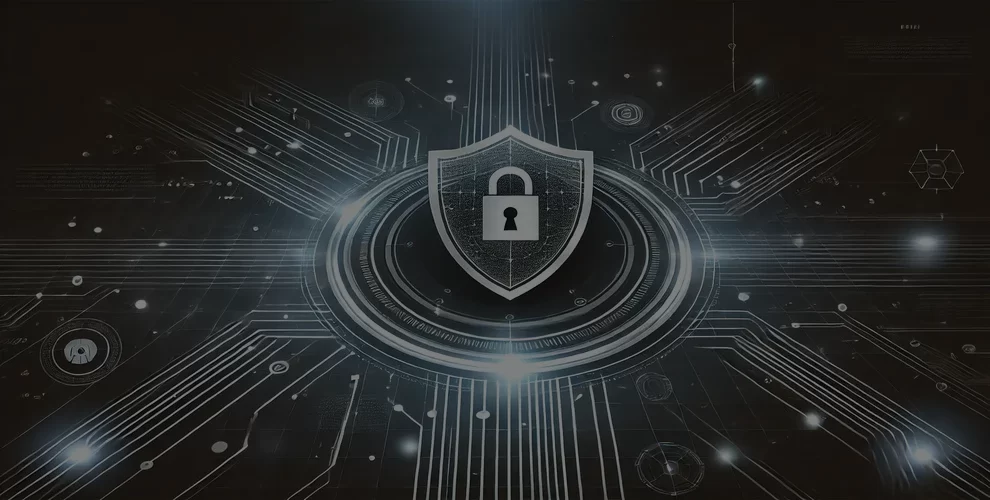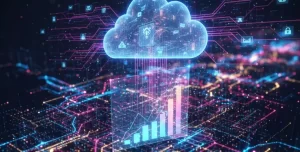
What is Cybersecurity? A Comprehensive Guide to Understanding Cyber Threats and Protection
Table of Contents
Introduction
In today’s world as we rely more on technology for communication, finance, and healthcare, protecting our data from cyber threats has never been more important.
This comprehensive guide by WikiGlitz will delve into the various facets of cybersecurity, helping you understand the potential risks and how to protect yourself effectively.
Key Takeaways
- Understanding the Basics: Cybersecurity is the practice of defending computers, servers, mobile devices, electronic systems, networks, and data from malicious attacks. It’s a broad field that encompasses various aspects of digital protection, from preventing unauthorized access to ensuring data integrity and confidentiality.
- Identifying Cyber Threats: There are numerous types of cyber threats that can compromise your security, including malware, phishing attacks, ransomware, and more. Understanding how these attacks work can help you implement the right security measures to protect your information.
- Implementing Protection Measures: Effective cybersecurity involves a combination of tools and practices, such as using firewalls, antivirus software, encryption, and multi-factor authentication. Regular updates, strong passwords, and safe browsing habits are also essential. Educating yourself and others about cybersecurity best practices can significantly reduce the risk of a cyber attack.
Understanding Cybersecurity
Definition of Cybersecurity
Cybersecurity is the defence against online threats against programs, networks, and systems. Typically, the goals of these cyberattacks are to extort money from consumers, compromise or destroy confidential data, or interfere with regular corporate operations.
Key Concepts: Confidentiality, Integrity, Availability (CIA Triad)
An essential framework for directing information security policies inside an organisation is the CIA Triad. The trio of elements consists of:
- Maintaining confidentiality means keeping private information out of the hands of unauthorised people and allowing only authorised personnel to access it.
- Integrity: Assures the accuracy and reliability of information. Unauthorised users should not be able to edit data.
- Availability: Guarantees that resources and information are accessible to those who require them at the appropriate time.
Types of Cyber Threats
Malware
- Viruses are malicious programs or files that affix to other programs and files, allowing them to spread from one computer to another and infect others along the way.
- Worms, like viruses, but independent software that may spread without the aid of humans or a host application.
- Trojans are malicious programs that pose as trustworthy programs. Trojan horses can open backdoors in your defences, allowing other viruses to enter.
Attacks by Phishing
The act of sending phoney emails that seem to be from a reliable source is known as phishing. Usually, email is used for it. Installing malware on the victim’s computer or stealing private information, such as credit card numbers and login credentials, are the objectives.
ransomware
Malicious software known as ransomware is made to prevent users from accessing a computer system or data unless a certain amount of money is paid. Usually, phishing emails or vulnerability-exploiting techniques are used to propagate it.
Denial-of-Service (DoS) Attacks
DoS attacks flood a system, server, or network with traffic to exhaust resources and bandwidth. This renders the system inoperative and prevents legitimate users from accessing it.
Man-in-the-Middle (MitM) Attacks
MitM attacks happen when someone intercepts messages between two people who think they are speaking with each other directly and relays them to the other party. While the data is in transit, the attacker can steal, change, or modify it.
SQL Injection
SQL injection attacks involve inserting malicious code into a server that uses SQL. When the server executes this code, it can read or modify data, execute administrative operations, or even issue commands to the operating system.
Common Cybersecurity Measures
Firewalls
A firewall is a type of network security equipment that keeps an eye on and filters incoming and outgoing network traffic according to the security policies that have been previously set up inside an organisation.
Antivirus Software
Antivirus software scans, detects, and removes viruses from your computer. It also provides real-time protection to prevent new infections.
Encryption
Data is transformed into a code by encryption to stop unwanted access. It makes sure that only people who possess the decryption key can access the data.
Multi-Factor Authentication (MFA)
Multi-factor authentication (MFA) is a security mechanism that uses multiple authentication methods from different categories of credentials to confirm a user’s identity during a login or other transaction.
Intrusion Detection Systems (IDS)
An IDS monitors network traffic for suspicious activity and issues alerts when such activity is discovered.
Secure Socket Layer (SSL) and Transport Layer Security (TLS)
Cryptographic protocols like TLS and SSL are developed to enable safe communication across networks of computers. When data is being transferred between a client and a server, they are utilised to encrypt it.
Best Practices for Cyber Protection
Regular Software Updates and Patch Management
Make sure that all software is current, including operating systems and apps. Security flaws that hackers could exploit are frequently patched in regular updates.
Strong, Unique Passwords and Password Management Tools
Use complex and unique passwords for different accounts. Password management tools can help generate and store strong passwords securely.
Regular Data Backups
Regularly back up your data to ensure that you can restore it in the event of a cyberattack or system failure.
Employee Training and Awareness Programs
Inform staff members about cybersecurity best practices and hazards. Frequent training can assist them in identifying such risks and taking appropriate action.
The Role of Cybersecurity Professionals
Different Roles in Cybersecurity
- Security analysts: They keep an eye out for security lapses in networks and look into occurrences when they happen.
- Penetration testers: Replicate cyberattacks on systems in order to identify weaknesses that an attacker might leverage.
- Security consultants: Provide companies with guidance on safeguarding their data and systems.
Skills and Qualifications Needed
Cybersecurity professionals need a mix of technical skills, such as knowledge of networks, operating systems, and encryption, as well as soft skills like problem-solving and communication. Certifications such as CompTIA Security+, CISSP, and CEH are often essential.
Importance of Continuous Learning and Certifications
The field of cybersecurity is always changing. Professionals must remain current on emerging risks and technological advancements. It is essential to pursue ongoing education through courses and certificates.
Cybersecurity in Different Industries
Healthcare
The healthcare industry deals with sensitive patient information, making it a prime target for cyberattacks. Protecting this data is crucial for patient privacy and safety.
Financial Services
Financial institutions are responsible for protecting vast amounts of sensitive financial data. Strong cybersecurity measures are essential to prevent fraud and data breaches.
Government
Government agencies handle a variety of sensitive information, from personal data to national security details. Ensuring the security of this information is critical for public trust and safety.
Education
Educational institutions hold a wealth of personal information about students and staff. Cybersecurity measures are necessary to protect this data and ensure the integrity of educational services.
E-commerce
E-commerce platforms process large volumes of personal and financial data. Robust cybersecurity practices are necessary to protect customers’ information and maintain trust.
Emerging Trends in Cybersecurity
Machine Learning and Artificial Intelligence for Threat Detection
Real-time cyber threat detection and response are increasingly being accomplished with AI and machine learning. Large data sets may be analysed by these technologies, which can also spot trends that can point to a cyberattack.
The Rise of Zero-Trust Security Models
The zero-trust model operates on the principle that no one, whether inside or outside the network, should be trusted by default. Every access request must be verified to ensure security.
Cybersecurity’s Significance in IoT
The security of IoT devices and the data they gather has grown significantly with the proliferation of these devices. It’s crucial to put strong security measures in place for IoT.
Cloud Security
Securing data and apps on the cloud is becoming more and more crucial as more businesses go to the cloud. Cloud security is defending against attacks to data, apps, and cloud infrastructures.
Legal and Regulatory Aspects of Cybersecurity
Overview of Key Regulations
- The General Data Protection policy (GDPR) is a privacy and data protection policy found in EU law.
- The California Consumer Privacy Act (CCPA) is a state law aimed at improving consumers’ rights and privacy for Californians.
Importance of Compliance
Compliance with regulations is essential for protecting data and avoiding legal penalties. Organizations must stay informed about relevant laws and ensure their cybersecurity practices meet regulatory requirements.
The Role of Cybersecurity in Data Privacy
Cybersecurity measures are vital for protecting personal data and maintaining privacy. Effective cybersecurity practices help organizations build trust with their customers and comply with data protection regulations.
Future of Cybersecurity
Predicted Trends and Challenges
The future of cybersecurity will likely see an increase in sophisticated cyber threats. Organizations must stay ahead of these threats by adopting advanced security technologies and practices.
The Importance of Innovation in Cybersecurity Solutions
Innovation in cybersecurity solutions is essential for staying ahead of cyber threats. Organizations must invest in research and development to create new security technologies and strategies.
Conclusion
Cybersecurity is a vital aspect of our digital lives, protecting our data and systems from a wide range of cyber threats.
By understanding the basics of cybersecurity, recognizing common threats, and implementing effective protection measures, you can significantly enhance your digital security. WikiGlitz has brought you these insights to help you stay informed and proactive in safeguarding your digital world.
For more insights and tips on cybersecurity, explore other articles on our blog and stay updated with the latest trends and best practices in digital protection.
FAQs
What are the most common types of cyber threats?
Malware, phishing attacks, ransomware, DoS attacks, MitM attacks, and SQL injection.
What skills are needed to become a cybersecurity professional?
Knowledge of networks, operating systems, encryption, problem-solving, and communication skills.
What are the emerging trends in cybersecurity?
AI and machine learning in threat detection, zero-trust security models, IoT security, and cloud security.
Want to keep up with our blog?
Our most valuable tips right inside your inbox, once per month.
Error: Contact form not found.
WikiGlitz Team
Welcome to WikiGlitz, your ultimate destination for tech insights and innovation. Our expert team is dedicated to delivering free resources and professional advice on various technology topics, including Artificial Intelligence, Cyber Security, Cloud Computing, and more. We strive to empower our readers with up-to-date information and practical guidance, ensuring you stay ahead in the rapidly evolving tech landscape. At WikiGlitz, we are passionate about making complex technology accessible to everyone. Our team of seasoned experts curates content that is both informative and engaging, helping you understand and leverage the latest tech trends. Whether you're a tech enthusiast or a professional, WikiGlitz is your go-to source for reliable, expert-driven content. Join us on this journey to explore and embrace the future of technology.





